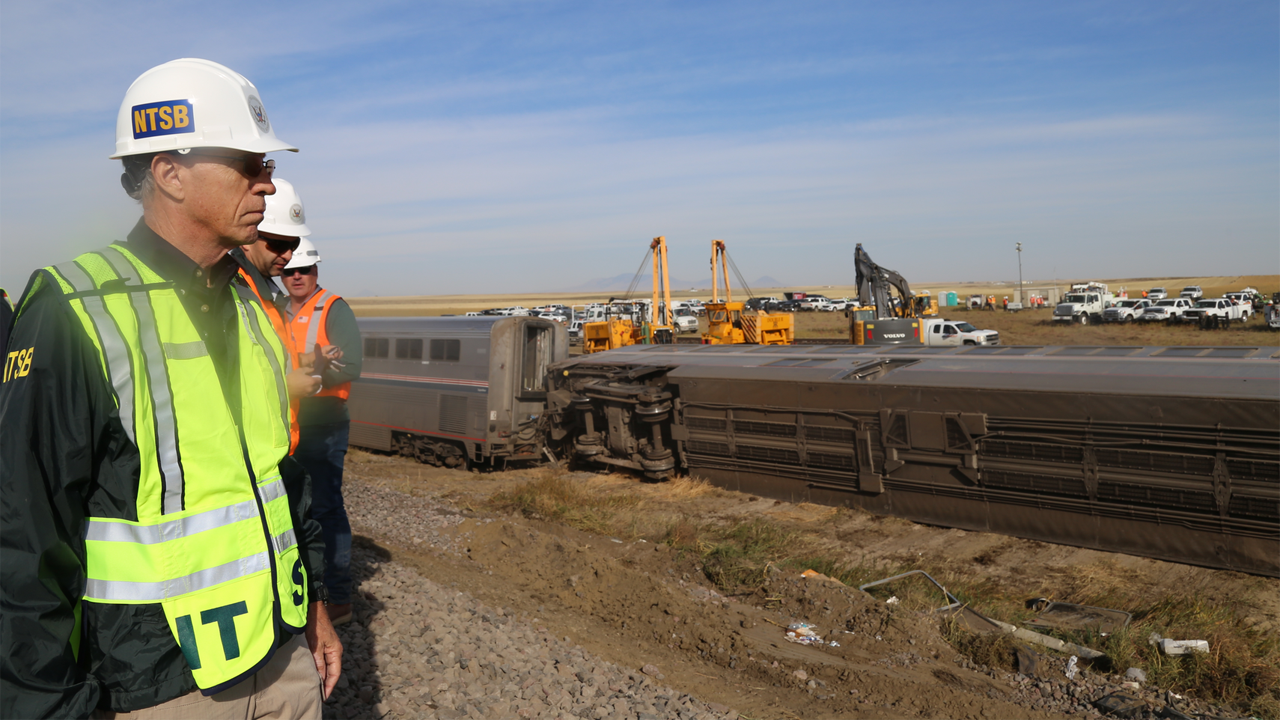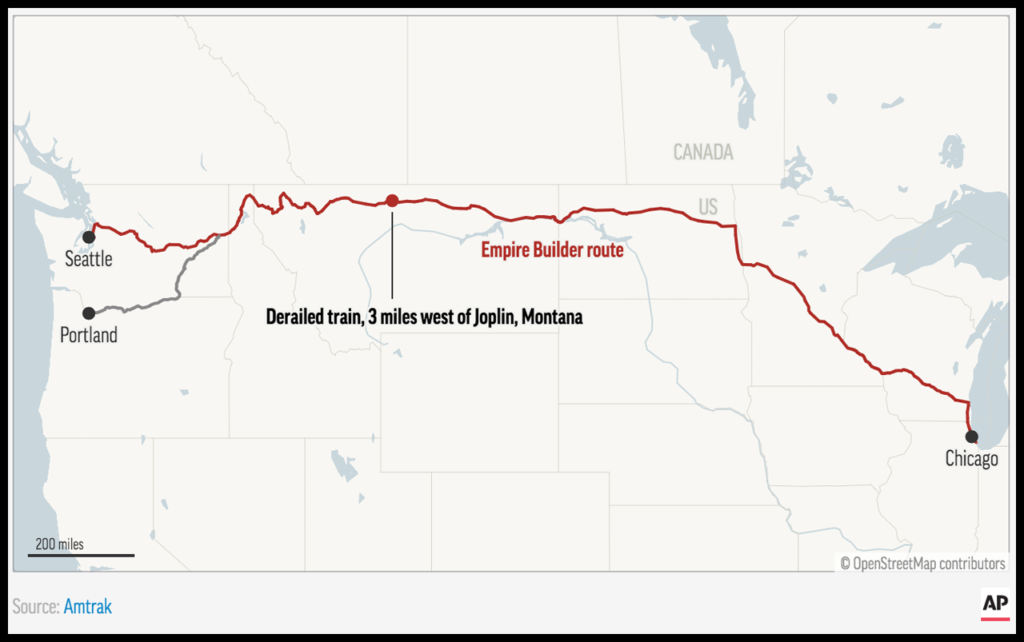
NTSB Opens Public Docket on Amtrak Empire Builder Derailment
Written by Marybeth Luczak, Executive Editor
Pictured: NTSB Vice Chairman Bruce Landsberg at the scene of the Sept. 25, 2021 Amtrak derailment near Joplin, Mont. (Photograph: Courtesy of NTSB, Sept. 26, 2021)
The National Transportation Safety Board (NTSB) has opened the public docket on its investigation into the Sept. 25, 2021, derailment of Amtrak’s Empire Builder train 7/27 near Joplin, Mont. The agency noted that the docket “contains only factual information collected by NTSB investigators; it does not provide the final report or a probable cause.”
NTSB on Feb. 21, 2023, reported that “[n]o conclusions about how or why the derailment happened should be drawn from the information within the docket,” which comprises more than 3,100 pages of reports on operations, mechanical, track and engineering, signal and train control, and crashworthiness/survival factors, as well as interview transcripts, photographs and other investigative materials.
NTSB said it will issue a report “at a later date” that includes analysis, findings, recommendations and probable-cause determinations related to the derailment, which led to the deaths of three passengers and injuries to 49 of the other 151 passengers and crew members on board. The accident occurred in a right-hand curve of BNSF track approximately three miles west of Joplin, which is about 100 miles north of Great Falls, in the vicinity of Buelow, Mont. (See map below.) The westbound Amtrak train included two locomotives and 10 cars, five of which derailed.

According to the Associated Press, investigators found that the track was warped “along a curve near the accident site”; details are included in the docket.
“Investigators identified the problem with the track based on video footage, including from two BNSF freight trains that went around the accident curve within 90 minutes before the Amtrak derailment,” the news organization reported Feb. 22, 2023. “After each of the freight trains had passed, the bend in the track appeared to get worse, investigators reported. Neither of the freight train crews saw the problem.
“‘The Amtrak engineer also did not see the track misalignment before traveling over that portion of track. Investigators, who watched the videos and were focused primarily on detecting the track deviation, were able to first see the misalignment only a couple seconds before the trains had traveled over it,’ the investigators said.”
NTSB on Oct. 26, 2021, released a preliminary report on its investigation, providing initial findings only—not a cause. Among them: Preliminary data from the leading locomotive’s event recorder showed that the train was traveling between 75-78 mph—under the 79 mph speed limit—when its emergency brakes were activated. In addition, the PTC (Positive Train Control) system was enabled and operating at the time of the derailment. NTSB noted that Amtrak estimated the damage to be more than $22 million.
Following the derailment, NTSB investigators conducted track and equipment inspections, reviewed signal and train control data logs, obtained data from the lead locomotive’s forward-facing image recorder and event recorder, and conducted interviews, according to the preliminary report. Their investigation focused on “track and engineering, equipment, survival factors, and passenger railcar crashworthiness.”
At that time, NTSB reported that investigations like this one can take up to 24 months to complete and typically look at not only what occurred, but also why, and propose recommendations to prevent future similar tragedies.



